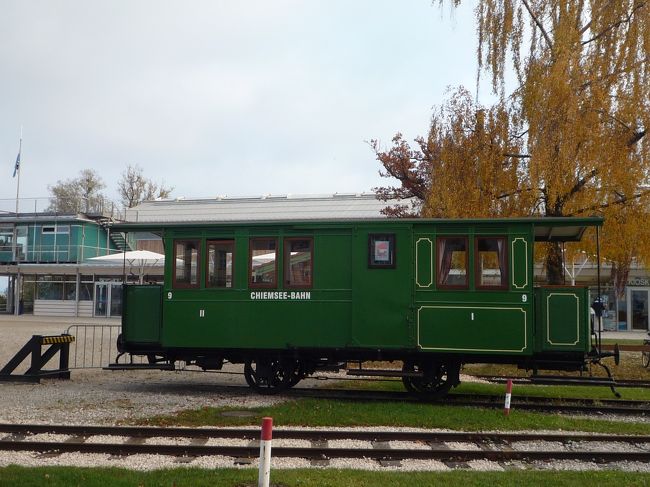Würzburg
Also found in: Dictionary, Thesaurus, Wikipedia.
Würzburg


- Product Specialist - Wurzburg Job: A leading medical technology company is advertising a vacancy for a Product Specialist position.
- Important Flu & COVID-19 (Coronavirus) Information. COVID-19 Vaccine Update: The West Palm Palm Beach VA Medical Center has had an overwhelming response to the COVID-19 Vaccine and is working diligently to schedule Vaccine appointments as quickly as possible. We are following a phased COVID-19 Vaccine distribution plan in accordance with CDC and VHA guidelines.
Norton's COVID-19 response: We are here to help with your courses. READER; STUDENT; EDUCATOR. Decoration Description: Side A: A scene of departure of an hoplite with extispicy (omen-taking by examining the entrails of animals).The hoplite is standing towards the left, taking the omen; in front of him is a nude boy who presents the entrails.
(vürts`bo͝ork), city (1994 pop. 128,875), capital of Lower Franconia, Bavaria, S central Germany, on the Main River. It is an industrial city, the center of a wine-producing region, and a rail and river transportation hub. Manufactures include machinery, electronics, clothing, and food. Brewing and publishing are also important.Würzburg was originally a Celtic settlement and was made an episcopal see by St. Boniface in 741. After the breakup (10th cent.) of the duchy of FranconiaFranconia
, Ger. Franken, historic region and one of the five basic or stem duchies of medieval Germany, S Germany. The region was included in the Frankish kingdom of Austrasia, becoming in the 9th cent. a duchy and the center of the East Frankish (or East German) kingdom.
.....Click the link for more information., its bishops ruled a vast territory on both sides of the Main as princes of the Holy Roman Empire. In 1168 the bishops assumed the title of dukes of Eastern Franconia, of which they held a major part. During the Peasants' WarPeasants' War,
1524–26, rising of the German peasants and the poorer classes of the towns, particularly in Franconia, Swabia, and Thuringia. It was the climax of a series of local revolts that dated from the 15th cent.
.....Click the link for more information. the bishop of Würzburg temporarily lost (1524–25) his territory to the rebels, but he held out at his fortress of Marienberg against Götz von BerlichingenBerlichingen, Götz von
, 1480–1562, German knight and adventurer. The head of a band of free soldiers, he lost (1504) his right hand in the battle of Landshut and wore an iron one in its place. His forays against various cities earned him popular fame.
.....Click the link for more information.. Later, the splendor-loving prince-bishops transformed (17th–18th cent.) the city into one of the finest residences of Europe and founded (1582) the Univ. of Würzburg, where the anthropologist and pathologist Rudolf VirchowVirchow, Rudolf
, 1821–1902, German pathologist, a founder of cellular pathology. He became professor at the Univ. of Würzburg (1849) and professor and director of the Pathological Institute, Berlin (1856).
.....Click the link for more information. and the physicist Wilhelm RoentgenRoentgen or Röntgen, Wilhelm Conrad
, 1845–1923, German physicist. His notable research in many fields of physics, especially thermology, mechanics, and electricity, has been overshadowed by his discovery
.....Click the link for more information. taught in the 19th cent.
Secularized after the Treaty of Lunéville (1801), Würzburg passed (1803) to Bavaria; was made (1805) a separate electorate in favor of Ferdinand, the dispossessed grand duke of Tuscany; and reverted (1815) to Bavaria. The city was severely damaged during World War II. Noteworthy landmarks include the baroque former episcopal residence (1720–44; designed by B. Neumann); the Romanesque cathedral (11th–13th cent.), containing works by the sculptor Tilman RiemenschneiderRiemenschneider, Tilman
, c.1460–1531, German Renaissance sculptor, who worked in stone and wood. He was in Würzburg by 1483. In 1520 he was made burgomaster, but he was imprisoned in 1525 because of participation in the peasant insurrection, and little is known about
.....Click the link for more information.; the Marienkapelle (1377–1479), a late Gothic chapel; the Old Main Bridge; and Marienberg fortress (the episcopal residence from the mid-13th to the 18th cent.).
Würzburg
a city in the Federal Republic of Germany, in the Land (state) of Bavaria; a port on the Main River. Population, 120,500 (1970). Wiirzburg is an important transportation junction. Its chief industries are machine construction (including automobiles) and the manufacture of typo-graphic machines and electronic equipment. There are publishing houses, a university (founded in 1582), a conservatory, and an administrative-economic academy.
Overlooking the Main are the Marienberg citadel (11th-16th centuries) with a round chapel (706), a castle (13th-18th centuries), and the Main-Franconia Museum, which contains the sculpture of T. Riemenschneider and others. There is also the Cathedral of St. Killian (basic construction 1042-1188), a number of medieval and baroque churches, a hospital (1576-85), the university building (1582-92), and the majestic residence of the bishop (1719-53; B. Neuman, architect; murals by G. B. Tiepolo). In the 18th century Wiirzburg was rebuilt under the direction of B. Neuman. In 1945 many of the buildings were destroyed.
W-9 Form 2020 Printable

REFERENCE
Würzburg: Amtlicher Fiihrer. Wiirzburg, 1955.
W-4 Form
Want to thank TFD for its existence? Tell a friend about us, add a link to this page, or visit the webmaster's page for free fun content.Link to this page:
W-9 Form 2021
1. INTRODUCTION
1 BACKGROUND
For treatment in advanced HIV infection, combination therapy with antiretroviral drugs (ARVs) is the best option under current international standards. The benefit of ARVs is best, if they are used relatively late in the course of the disease, commonly after a progression of years. However, under a global perspective, more than 90% of those who need ARVs world-wide have no access to them.
ARVs are not used in early stages of infection without significant immunodeficiency. Although a variable degree of immunodeficiency may be present even in early HIV disease, there is no established treatment for this phase.
Immunodeficiency is associated with a decline of a certain population of lymphocytes, the CD4 cells or T-helper cells. It seems to be a useful concept to postulate that a treatment which slows down this loss of CD4 cells could also slow down the progression of HIV disease.
In vitro findings and clinical studies showed a CD4 cell stabilizing effect of corticosteroids. First clinical studies were based on relatively high dosages (Andrieu JM 1995, LU W 1995, Andrieu JM 2004,). These are hardly justifiable for a longer time, because of numerous side effects, e.g. immunosuppression of the cellular immune system, the manifestation of diabetes or the Cushing syndrome.
In 2005 Ulmer et al. reported in a mono-centric open label study a CD4- stabilizing effect under the administration of low dose prednisolone (5 mg/d) (Ulmer A 2005). Patients with more than 300 CD4 cells/µl were included. After two years the 28 patients on treatment presented 176.1 more CD4 cells than those of 62 control patients in comparison to their baseline counts (p 0.0009) and after three years the 15 patients on treatment presented 236.2 more CD4 cells/µl than those of 33 control patients in comparison to their baseline counts (p = 0,0021). The initiation of treatment with the more expensive and toxic ARVs was delayed.
Based on this study and an increasing amount of experience by Ulmer and others, it seems to be justified to systematically investigate the effect of low dose prednisolone on the progression of HIV disease. The costs of 5 mg prednisolone per day is in a range of 3 US $ per year (Action Medeor). If it turned out that low dose prednisolone prolongs the period until ARVs become indicated without imposing intolerable risks on the patient, this approach could be a very attractive future option for countries with health systems in resource-poor settings.
1.2 RATIONAL FOR THE STUDY
Until now, there are no prospective randomized studies on the use of corticosteroids in latent HIV disease. Furthermore, low dose prednisolone (5 mg/d) is not sufficient tested for the risks and benefit for HIV patients especially for those living in poor settings with a higher risk of infections. This study will assess the benefit and the safety profile for low dose prednisolone therapy for patients in a region with limited resources and high prevalence of infections.
1.3 SITE DESCRIPTION
The study will be conducted at the Bugando Medical Centre in Mwanza, Tanzania.
STUDY OBJECTIVES
2.1 PRIMARY
The primary objective of the study is to assess the effect of the low dose prednisolone therapy on the time to progression of HIV disease. The time to progression is defined as the time between the baseline and the change of staging to advanced disease (CDC stage A3, B3 or C) or death (see Appendix Va).
2.2 SECONDARY
The following secondary objectives will be evaluated in the same patient population:
- Amount of CD4 Cells
- Overall survival
- Safety profile
- Quality of life
- Immune system status, co-infections
- Virus characterization by sequencing
PATIENT DEFINITION
This is a mono-centred trial involving 400 eligible patients.
3.1 INCLUSION CRITERIA
- Positive HIV antibody test. The HIV infection has to be confirmed according to the WHO Guidelines (see Appendix IX).
- Adult male or female patients, age ≥ 18 years.
- Patients must have given an informed consent and signed a consent form prior to beginning protocol specific procedures (Appendix VI).
- Patients in CDC Stage A 1, 2, B 1, 2 (see Appendix Va) not yet requiring ARVs.
- CD4 cell count ≥ 300 cells/µl (for inclusion 300 cells/µl for reason of security).
- No AIDS defining symptoms,
- WHO Performance Status of 0,1,2 (see Appendix II).
3.2 EXCLUSION CRITERIA
- No pregnancy. Female patients of childbearing potential must have a negative pregnancy test at study entry.
- Prior therapy with ARVs.
- Active tuberculosis.
- Abnormal laboratory results especially glucose level > 160 mg/dl, liver enzymes (AST, ALT) ≥ 1,5 x ULN, bilirubin ≥ 4 x ULN, alkaline phosphatase ≥ 5 x ULN, creatinine > 2,0mg/dL (>176,8 µmol).
- Serious other diseases, including psychiatric disorders.
PLAN OF STUDY
4.1 STUDY DESIGN
This is a double blinded, randomized, phase II placebo-controlled clinical trial of oral low dose prednisolone therapy for HIV infected patients with CDC Stage A1,2 or B1,2 (see Appendix Va).
The trial is a mono-centred and involves 400 eligible patients in Tanzania, divided in:
- 200 Patients in Study medication group
- 200 Patients in Placebo group
The study enrollment period will last for 12 month (30 patients per month). A study period of 24 month will follow. After 12 months, the first intermediate analysis will be done. In case of no significant negative safety aspects, the study will continue for the next 12 month. A follow-up period for further evaluation can be added.
4.2 STUDY TREATMENT
The patients in the Treatment Group will get prednisolone 5 mg per os daily. The placebo group will get one tablet of placebo per os daily.
4.3 DOSE MODIFICATION AND DELAY
There is no dose modification planned in this study. Study drug related reactions like hypersensitivity reactions, fluid retention, hypertension, gastric ulcer, and diabetes will be treated according to local standards.
4.4 DISCONTINUATION
Patients will be removed from the study for the following reasons:
- disease progression: upgrading of clinical stage and/or CD4 cell count < 200/µl, both requiring the start of HAART ( = primary study objective, study completed);
- development of unacceptable toxicity not manageable by symptomatic care;
- administration of antiretroviral treatment;
- significant protocol violation in the prednisolone group, e.g. interruption of taking the study medication for more than four weeks (compliance);
- pregnancy;
- consent withdrawn;
- investigator's decision.
Patients are always allowed to refuse the participation of study and will be withdrawn.
The reason for removal for all patients will be documented on the case report form. Patients who are not eligible or not valuables for the study analysis will be replaced.
4.5 PRE-STUDY SCREEN
The following data will be obtained within two weeks prior to randomization:
- informed consent and signed consent form (audio consent for illiterate persons);
- complete medical history including dates and description of initial diagnosis of HIV infection, concurrent illnesses and concomitant medication;
- physical examination including weight, height, WHO performance status (Appendix II);
- vital signs: blood pressure, pulse rate, oral temperature;
- HIV staging according to CDC: examination for AIDS defining signs and CD4 cell count;
- chest x-ray to exclude active tuberculosis;
- short quality of life score;
- clinical laboratory tests: full blood count, glucose, liver enzymes (AST and/or ALT), bilirubin, alkaline phosphatase , creatinine; pregnancy test for female patients.
4.6 RANDOMIZATION
After having checked the patient's eligibility, the investigator will request randomization. A Randomization list will be provided to the BMC. The randomization number will be given by the study nurse. The study medication is double blind. Block randomization may be used.
4.7 EVALUATION DURING THE STUDY
4.7.1 EVALUATION EVERY VISIT (MONTH 0,1,2,3,4,5,6,9,12,15,18,21,24)
The patient will be examined every month for the following parameters:
- medical history update, including documentation of concurrent conditions, hospitalization and concomitant medications;
- quality of life score;
- physical examination including weight and WHO performance status;
- vital signs: blood pressure, pulse rate and oral temperature;
- HIV staging according to CDC: examination for AIDS defining signs and CD4 cell count;
- full haematological blood count;
- serum chemistry: glucose level, liver enzymes (AST and/or ALT), bilirubin, alkaline phosphatase , creatinine;
- pregnancy test for female patients.
- toxicity evaluation: Toxicity is defined as a study drug related adverse event (AE) grade 3 (severe) or 4 (life threatening). Toxicity will be recorded as it occurs and graded according to the NCI Common Toxicity Criteria (see Appendix III). Toxicities that can not be graded using the NCI Common Toxicity Criteria will be recorded as mild (asymptomatic), moderate (symptomatic but not interfering significantly with function), severe (causing significant interference with function) or life-threatening.
4.7.2 EVALUATION EVERY 3 MONTH (IN ADDITION)
• Sputum test for Tuberculosis.
4.7.3 EVALUATION EVERY 6 MONTH (IN ADDITION)
- Chest x-ray for Tuberculosis.
- Sputum test for Tuberculosis.
STUDY ASSESSMENTS
5.1 EFFICACY ASSESSMENT
5.1.1 TIME TO PROGRESSION
The time to progression is defined as time period between the baseline and the change of staging( see appendix Va).
Progression is:
- CD4 cell count ≤ 200 cells/µl; (Stage A3, B3 )
- CDC clinical stage C; all counts;
- death.
5.1.2 AMOUNT OF CD4 CELLS
The number of the CD4 cells at baseline (= 100%) will be compared to the number during the study (> 100%: increase; < 100%: decrease).
5.1.3 QUALITY OF LIFE
Some Quality of life questions will be completed for each patient during the visits.
5.1.4 OVERALL SURVIVAL
The duration of survival will be determined by measuring the time interval between the initial dose of study medication and the date of death. The overall survival will be evaluated in the prolonged follow up period of the study.
5.2 SAFETY ASSESSMENT METHODS
5.2.1 SUSPECTED ADVERSE RESPONSE (SUSAR), ADVERSE EVENT AND TOXICITY
Toxicity is defined as a study drug related Suspected Adverse Response (SUSAR) and Adverse events (AE) Grade 3 (severe) or 4 (life threatening). It will be evaluated based on a graded scale of 0-4 using the NCI Common Toxicity Criteria (see Appendix III). Toxicities that can not be graded using the NCI Common Toxicity Criteria will be graded as mild (asymptomatic), moderate (symptomatic but not interfering significantly with function), severe (causing significant interference with function) or life-threatening.
The SUSAR´s are:
Abdominal pain Hypertension Diabetes Hyperglycaemia Fluid retention Pneumonia Gastritis Weight gain
The AEs are:
Abdominal Pain Nausea Candidiasis Peptic ulcer Diarrhoea Pneumonia Fever Skin Herpes simplex,zoster Vomiting Hepatitis (liver function) Urinary tract infection
AEs and SUSARs will be monitored during every visit using a hard coded page in the case report form.
Additional AEs occurring can be added.
5.2.2 LABORATORY MEASUREMENTS
Biochemical and haematological tests will be conducted on blood samples once a month at every visit. If AEs occur additional tests have to be done according to local standards.
For later additional laboratory analysis a small amount of plasma samples and T-Cells will be stored at the National Institute for Medical Research. These samples will be analyzed in Germany (Medical Mission Institute, University of Wuerzburg) for identifying the status of activation of the immune system, co-infections and virus characterization.
- ETHICAL CONSIDERATIONS

The study was approved at ethic board committees at the 21.02.2007 Approval Number: NIMR/HQ/R.8a/Vol.IX/518 Board Name: National Institute for Medical Research Tanzania Board Affiliation: Tanzania: Ministry of Health Phone: +255222121400 Email: headquarters@nimr.or.tz ethical and additionally at the 26.01.2007 Approval Number: CW 150/48 Board Name: Bugando Medical Center, Ethic board, Mwanza, Tanzania Board Affiliation: Bugando Medical Center Phone: +2550282500799 Email: infobmc@bugandomedicalcentre.go.tz